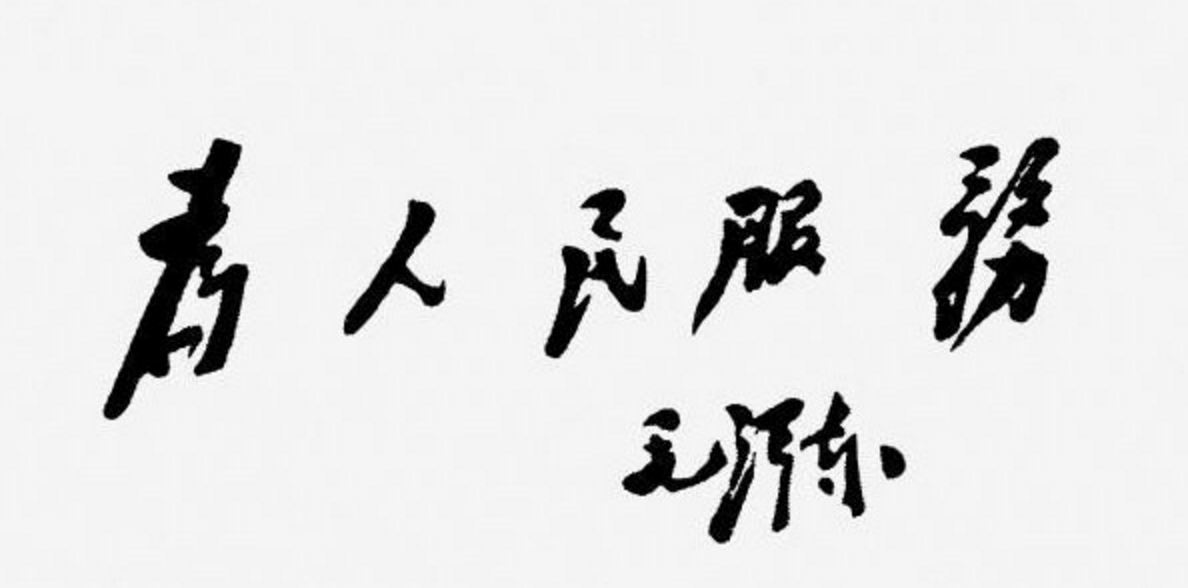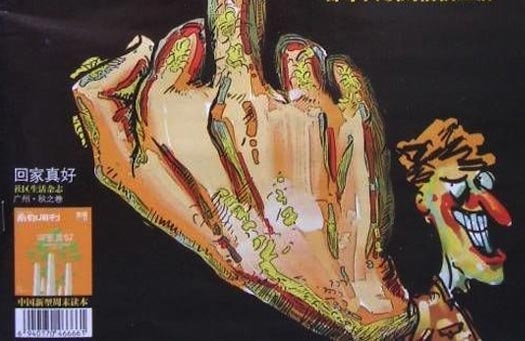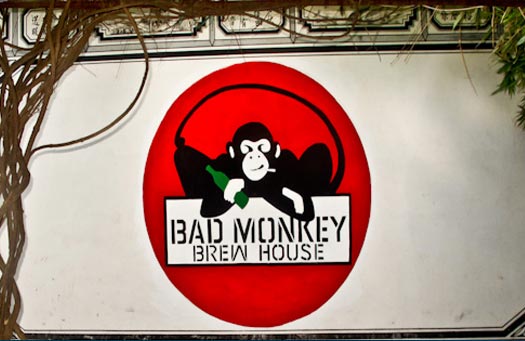AN OLD JOKE in linguistics runs: What is the difference between a language and a dialect? (pause for dramatic effect) A language is a dialect with its own army.
David Moser, author of A Billion Voices: China’s Search for a Common Language, has heard the joke; he even addresses it. But in the midst of a compelling discussion of a generally overlooked subject—the centrality of establishing a common tongue and a shared written language for all of China—the joke still mocks from the margins.
China is only slightly smaller than Europe (including post-Soviet Russia), and—exclusive of its so-called “minority languages”—is home to seven major “dialect” groupings that are, for the most part, mutually non-intelligible. Cantonese, which is spoken in Hong Kong and Guangdong Province by as many people as there are speakers of Italian—and this is simply to take one example—is widely considered by linguists to be as different from modern, standard spoken Chinese as English is from Dutch, or, say, French from Spanish.
When Moser finally arrives at what he calls the “humorous definition” (he substitutes “navy” for “army”), he asks, “What exactly is meant by the term ‘dialect’? And what is the difference between a language and a dialect?”
His answer might be construed as evasive and Chinese Communist Party (CCP)-serving: “In language studies, there are almost no strict delineations between dialects, only blurred statistical regions.”
This may be true, but when Europeans travel to the other side of a “blurred statistical region”—from somewhere they understand what is said and can comprehensibly reply to it, to somewhere they cannot—“dialect” is unlikely to be the word that springs to their minds. In China, such linguistic transitions are common, even within one province. Take southern Guangdong, where Cantonese is spoken, and northern Guangdong, where Chaozhou—known in Southeast Asia as Teochew—is spoken. The two “dialects”, separated by just a couple of hundred kilometers, are mutually incomprehensible.
In Moser’s defense, as he points out, A Billion Voices “is not a book for linguistic specialists,” and he proposes that the word “dialect” be used “for convenience sake”. He continues, “In China the language-dialect distinction has been fraught with politically charged connotations, as the PRC [People’s Republic of China] government has preferred the convenient fiction of classifying all the various forms of regional speech varieties as ‘dialects’, as a way of obscuring the fact that many would be considered linguistically to be separate.”
It is a subject that has provided rich ground for linguistic quips, with Chinese scholar John DeFrancis concluding, as Moser reports, that the question “‘Do you speak Chinese?’ is akin to asking ‘Do you speak Romance?’”
This where Moser’s book is at its best—fecund in vivid details that illuminate the enormous challenge of establishing a shared spoken and written language for a vast landmass better described as an empire than a nation. It also offers the lay reader a relatively effortless introduction to the broad scope of language-policy debate among Chinese scholars from the fall of the Qing Dynasty in 1912 through and until years after the establishment of the PRC in 1949.
It always was—and continues to be—a terrain scattered with un-cleared landmines. The challenge of traversing it reposes not only in determining which of the spoken “Sinitic languages”, “dialects”, or even “topolects”—depending on the linguistic school of thought scholars of Chinese subscribe to—should be used as a common spoken tongue, but also in formulating a common written language. Until the 20th century, China’s only written language—ignoring Tibetan, Uyghur, Manchu and Mongolian scripts—was the language of the imperial examination system: the language of scholars, or Mandarins, giving rise to the word “Mandarin” as a catch-all term for the Chinese language.
To quote Moser: “The artificial classical language had remained the official written language of China for more than 2,000 years. Whereas Europe had discarded Latin and was publishing books in the vernacular by the 16th century, incredibly, Classical Chinese continued to be the language of Chinese texts until well into the 20th century.”
The extent to which Classical Chinese can be compared to Latin in Europe is that mastery of China’s written language, until very recently, involved extensive years of study by any native speaker of any Chinese “dialect”—just as it would a speaker of modern English, German, or even modern Italian, to master the Latin of ancient Rome and write it, ideally, as well as Cicero. That, at least, was theoretically the aim of China’s famously rigorous imperial examination system, which effectively conferred literacy on a minority elite with the luxury of endless hours of study, rather than the travail of tilling and harvesting fields, washing dishes, or pushing/pulling rickshaws.
In short, when modern language-policy reformers at last confronted the dilemma of rejuvenating an ossified literary language and making it accessible to ordinary Chinese, the possibilities were so diverse they included radical solutions such as abandoning Chinese characters altogether. “Imagine,” Moser writes, “a London of the 1920s in which all scholarly books were still published in Latin, enjoyed by only a small percentage of literate scholars, while the works of Shakespeare, Dickens and Darwin remained inaccessible to the masses.”
Frankly, Moser’s hypothetical Chinese London would likely be a place in which “the works of Shakespeare, Dickens and Darwin” did not exist at all. But that is splitting hairs. In China, before the 1920s, as early as 1913, and as Moser colorfully describes it, argument was vitriolic over how to counter a modernized West that had humiliated imperial China, forcing it to yield foreign concessions. Language policy was at the forefront of that argument, with agreement fracturing over just what a universally spoken and written mode of communication would be. A northern faction and a southern faction locked horns at a 1913 linguistic policy conference—occasionally coming to physical blows.
“As tempers flared and teacups flew,” writes Moser, “the north-south linguistic and political differences threatened the collapse of the conference itself.” He continues to describe how the Shanghainese usage of the word “rickshaw” was interpreted by a northern faction leader as “son of a bitch”, leading to fisticuffs.
But, such scrappy linguistic divergences aside, in terms of standardizing spoken Chinese – establishing what today is called Putonghua, or “common language”—the northern faction had history and numbers on its side. Mandarin, or guanhua—“language of officials”—had, in some form or another, been based on Chinese spoken in Beijing, or the “northern capital”, since at least the 14th century.
Meanwhile, ructions that divided China’s language policy continued unabated for years long after 1913. Some Chinese scholars argued for the abolition, not only of Confucianism and Taoism—perceived as legacy-cultural impediments to transforming China into a modern power—but abandoning Chinese characters and the Chinese language altogether. “If the ideas of Confucius could be relegated to the dustbin of history, why not the language of Confucius, as well?” writes Moser.
Amid such fractious disagreements, enter Mao Zedong, who in 1949 was to become “the great helmsman” of the PRC. As Moser writes, in 1940, when the Chinese communists had retreated to regroup in remote Yan’an, in north-western China’s Shaanxi Province, “Mao and his comrades joined in a nationwide movement to establish a ‘New Writing Society’ … setting their sights on an outmoded feudal enemy, the Chinese characters.”
“Sooner or later,” Mao told the journalist Edgar Snow (author of Red Star Over China) “we will have to abandon characters altogether, if we are to create a new social culture in which the masses fully participate.”
It never came to pass. In fact, when Mao and his fellow revolutionaries seized Beijing (or Peking, as it was known in English at the time) from the Nationalists, or the Kuomintang (KMT)—who had ruled China since 1919, and earlier under other names—China was as linguistically diverse and disunited as ever. Arguably, in many ways, it still is.
Writes Moser, “When Mao stood on the Tiananmen rostrum in October of 1949 and declared the official establishment of the People’s Republic of China, he did not make this announcement in standard Putonghua. His proclamations were spoken in a Hunan accent so strong that some members of the crowd came away with different versions of what he had actually said.”
Mao about-faced on his Year Zero solution to China’s written-language problem. In fact, almost all of the PRC’s eventual language policy amounted to compromises on policies already instituted by the KMT. Chinese characters were not abandoned; rather, written Chinese became one written vernacular – that of northern China, loosely based on the “dialect” of intellectual Beijing with an admixture of diluted Classical Chinese. In other words, in pursuit of a single spoken and written language for all of China, the “dialects” of Shanghai, Fujian, Sichuan—almost all of those that were not northern Chinese—were denied written vernaculars of their own, subsumed under the CCP’s imperatives of empire.
It is difficult to imagine what China might have become if Mao had stuck to his plan of abandoning Chinese characters, but a possible outcome is that it might have incidentally given rise to regional linguistic nationalisms within China by giving literary voice to silenced vernaculars.
Interestingly—and an anecdote of long provenance in Chinese scholarly circles—Moser quotes American writer Peter Hessler, who in an interview with one Chinese linguist is told that, of all people, Joseph Stalin may well have had the most transformative impact on Mao’s change of heart—and not implicitly for the reasons speculated above.
According to Zhou Youguang, known as the Father of Pinyin—China’s contemporary official Romanized version of Putonghua—Stalin said to Mao in Moscow, “‘You’re a great country, and you should have your own form of Chinese writing. You shouldn’t simply use the Latin alphabet.’”
If the story is to be believed, so two of the 20th century’s greatest mass murderers changed the fate of the Chinese language, and perhaps contained China in its current iron-clad grip of CCP imperialism, in the course of a casual conversation.
Books on language policy get no better than this.
Some of what follows in Moser’s A Billion Voices—in documenting the PRC’s controversial simplification of Chinese characters, establishing Pinyin as a standard Romanization system, and the pushback by “prestige dialects” such as Cantonese and Shanghainese—may include some dry moments for non-specialists. But much nevertheless remains to command the attention of readers on a subject central to China’s modernizing mission—particularly in a world in which everyone from Paris boutique-store vendors to Chiang Mai guesthouse owners are now learning “Chinese”.
A version of this essay was first published in Mekong Review. Subscribe for more.
A Billion Voices: China’s Search for a Common Language






